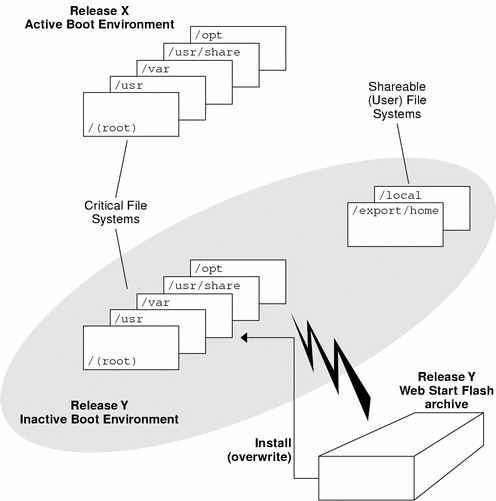Upgrading a Boot Environment Overview
After you have created a boot environment, it remains unchanged until you are ready to upgrade it. You can perform an upgrade on the boot environment at any time. The upgrade does not affect any files in the active boot environment. When you are ready, you then activate to the new release. Figure 1–2 shows an upgrade to an inactive boot environment. For procedures on upgrading a boot environment, see Chapter 4, Upgrading With Solaris Live Upgrade.
Figure 1–2 Upgrading an Inactive Boot Environment

Rather than upgrading, you can install a Web Start Flash archive on a boot environment. The Web Start Flash installation feature enables you to create a single reference installation of the Solaris operating environment on a system that is called the master system. Then you can replicate that installation on a number of systems that are called clone systems. In this situation, the inactive boot environment is a clone. For more information about the Web Start Flash installation feature, see “Web Start Flash Installation Feature Topics” in Solaris 8 Advanced Installation Guide.
When you install the Web Start Flash archive on a system, all the files in the archive are copied to that system and a new release is created without affecting the active boot environment. But, unlike an upgrade which merges files, installing a Web Start Flash archive overwrites the files as an initial installation would. Figure 1–3 shows an installation of a Web Start Flash archive on an inactive boot environment. For procedures on installing a Web Start Flash archive, see Installing Web Start Flash Archives on a Boot Environment.
Figure 1–3 Installing a Web Start Flash Archive

- © 2010, Oracle Corporation and/or its affiliates
